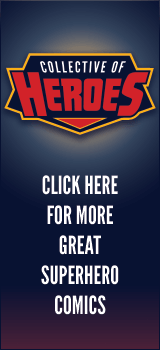Under the Influence
I thought I’d talk this week about a couple of works that have influenced and inspired my efforts on The Specialists. Both provide alternate histories where superheros (and villains) have changed the social and political realities of the world in surprising ways. In other words, these are the stories that The Specialists wants to be when it grows up.
Watchmen, by Alan Moore, Dave Gibbons, and John Higgens, (writer, artist, and colorist, respectively) is a deconstruction of the whole superhero genre. Moore is famously bored with traditional superhero stories, so when he ventures into that too-familiar territory, he tends to trash the place. Watchmen explored the psychological (and sexual) and political implications of costumed vigilantism in ways that had never been considered in the late eighties, when it was first published (though it has had many imitators since then).
Probably the most specific influence of Watchmen on The Specialists is the elimination of all internal dialogues, or “thought bubbles”. Most comics these days have replaced thought bubbles with first-person narrative captions, but this was another groundbreaking aspect of Watchmen. When it was first published, thought bubbles were a common way for comics writers to literally show what was on their characters’ minds, but Moore chose to demonstrate a character’s thoughts more naturally: through his actions.
Where we part ways rather significantly with Watchmen is in the way that Al and I collaborate. Moore had a very specific vision, and his words were tightly integrated with the artwork, the two working together in unprecedented ways. However, to achieve that synergy, Moore had to write very specific panel-by-panel scripts. Each image was described in great detail. Conversely, my scripts are quite loose. I do describe the action, and write out the dialogue and captions, but Al contributes much of the visual narrative. I’ll sometimes include directions such as “close up on this” or “big reveal of that,” but he handles the composition of most frames on his own.
I’m always excited to see a newly laid out page, because I never know exactly how Al will interpret what I’ve written. He often adds touches that I never would have considered. This looser style of collaboration is best for us, both because of Al’s contributions, and because I’m no Alan Moore. (Once I achieve Moore’s Mad Genius status, I’ll clamp down on the layouts and demote Al to the role of doodle monkey.)
On Friday, I’ll talk about the George R. R. Martin-edited Wild Cards series of books, another example of a superheros-in-the-real-world setting, but with a very different style.
Shawn


Comments are closed.